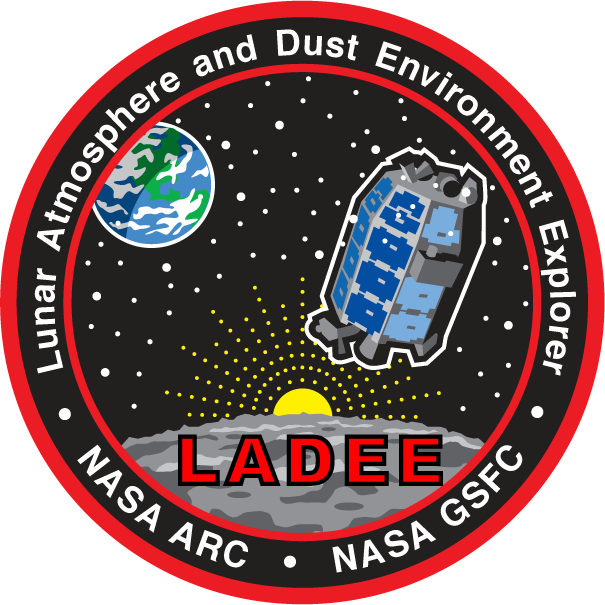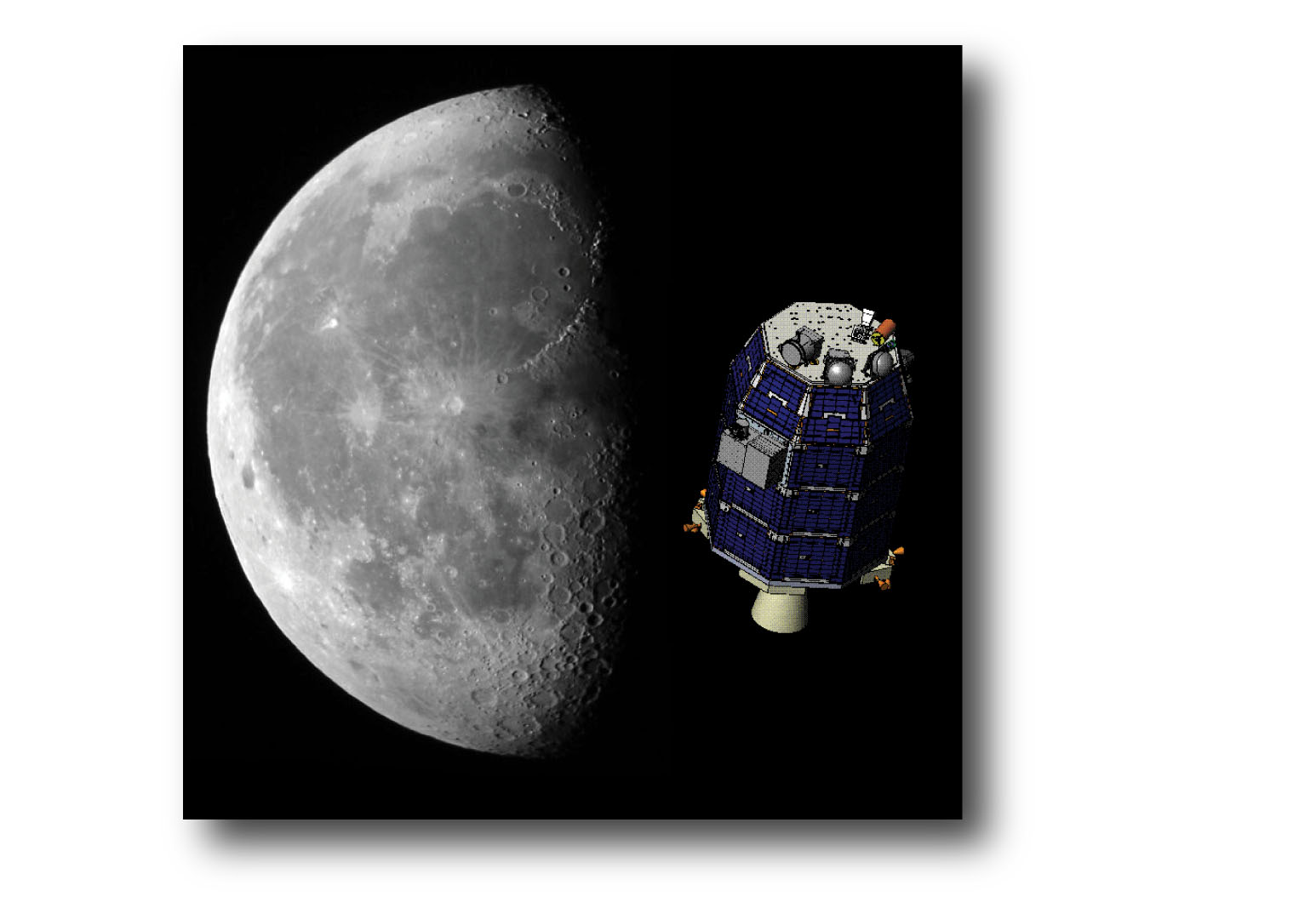
Lunar Atmosphere & Dust Environment Explorer (LADEE) is a robotic mission that, from low lunar orbit, gathered detailed information about the lunar atmosphere, conditions near the surface and environmental influences on lunar dust. Throughout the primary and extended mission phases the orbital period ranged from 1.9 to 2.5 hours.
Basic Mission Goals
Determine the composition of the lunar atmosphere and investigate the processes that control its distribution and variability, including sources, sinks and surface interactions.
Characterize the lunar exospheric dust environment and measure any spatial and temporal variability and impacts on the lunar atmosphere. For more information on the LADEE mission see the following links:
Basic Mission Goals
Determine the composition of the lunar atmosphere and investigate the processes that control its distribution and variability, including sources, sinks and surface interactions.
Characterize the lunar exospheric dust environment and measure any spatial and temporal variability and impacts on the lunar atmosphere. For more information on the LADEE mission see the following links:
Mission Bundle - overall mission information and data collections
Science Goals
Mission Description
Spacecraft Description
Science Goals
Mission Description
Spacecraft Description
The instrument complement consists of:
Neutral Mass Spectrometer (NMS)
A neutral mass spectrometer that measures the mass distribution of neutral species over a mass-to-charge (m/z) range between 2-150. Data are stored as time ordered ASCII tables with supporting documentation.
Ultraviolet/Visible Spectrometer (UVS)
An ultraviolet/visible spectrometer spanning 250-800 nm wavelength, with high (<1 nm) spectral resolution. Data are stored as time ordered ASCII tables with supporting documentation.
Lunar Dust Experiment (LDEX)
A lunar dust experiment that is sensitive to a particle size range of between 0.1 - 5 μm. Data are stored as time ordered ASCII tables with supporting documentation.
Lunar Laser Communications Demo (LLCD) NASA's first space-laser communications experiment was a technology payload and was not archived.
A neutral mass spectrometer that measures the mass distribution of neutral species over a mass-to-charge (m/z) range between 2-150. Data are stored as time ordered ASCII tables with supporting documentation.
Ultraviolet/Visible Spectrometer (UVS)
An ultraviolet/visible spectrometer spanning 250-800 nm wavelength, with high (<1 nm) spectral resolution. Data are stored as time ordered ASCII tables with supporting documentation.
Lunar Dust Experiment (LDEX)
A lunar dust experiment that is sensitive to a particle size range of between 0.1 - 5 μm. Data are stored as time ordered ASCII tables with supporting documentation.
Lunar Laser Communications Demo (LLCD) NASA's first space-laser communications experiment was a technology payload and was not archived.

 PDS: The Planetary Atmospheres Node
PDS: The Planetary Atmospheres Node

